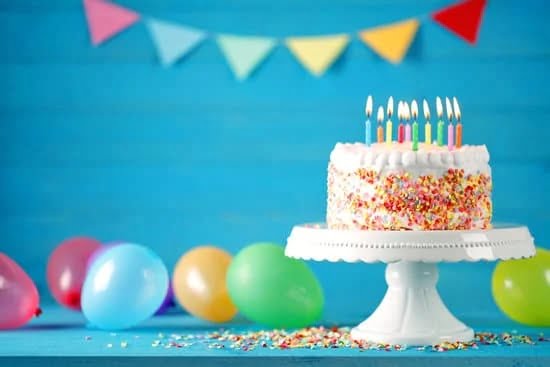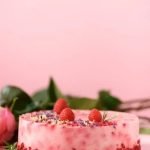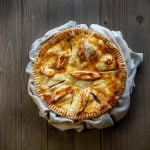Decorative swirls have long been a staple in cake decorating, adding a touch of elegance and creativity to any confection. They not only enhance the beauty of a cake but also serve as a reflection of the baker’s artistry and attention to detail.
Learning how to make decorative swirls can open up a world of possibilities for aspiring bakers and seasoned professionals alike. Whether you’re looking to create intricate designs or simply add flair to your cakes, mastering the art of swirling is essential.
The importance of decorative swirls in cake decorating cannot be overstated. These elegant and whimsical patterns can transform an ordinary cake into a mesmerizing centerpiece that captures attention and captivates taste buds. Swirls allow bakers to showcase their creativity by experimenting with different shapes, colors, and textures, making each creation unique and tailored to specific themes or occasions.
Not only do decorative swirls enhance the beauty of a cake, but they also offer many practical benefits. By learning this skill, bakers gain the ability to elevate their baked goods from homemade treats to professional-looking masterpieces. Decorative swirls can add depth, dimension, and sophistication to any design, making even simple cakes look exquisite. Additionally, mastering the technique of creating perfect swirls allows bakers to expand their repertoire and explore more advanced designs and patterns.
In this article, we will delve into the art of making decorative swirls on cakes. We will provide step-by-step instructions on achieving flawless swirls, explore various piping tips suitable for different designs, unleash techniques for embellishing swirls with color and texture, and go beyond basic swirling with advanced designs.
Additionally, we will troubleshoot common mistakes beginners make and guide you through showcasing your swirl-adorned creations through stunning photography techniques. So let’s dive in headfirst into the world of decorative swirls on cakes.
Understanding the Basics
To create beautiful decorative swirls on a cake, it is important to have the right equipment and materials. Here are the essential tools you will need:
- Piping Bags: These are cone-shaped bags made of cloth or disposable plastic. They are used to hold the frosting and provide control when piping swirls onto the cake.
- Tips: Piping tips come in various shapes and sizes, each producing a different type of swirl or design. Some common tips for creating decorative swirls include the round tip, star tip, and petal tip.
- Couplers: Couplers are used to attach different tips to a piping bag without changing the bag itself. This allows you to easily switch between tips while decorating your cake.
- Frosting Consistency: Selecting the right consistency of frosting is crucial for achieving perfect swirls. Frosting that is too thin can result in droopy swirls, while frosting that is too thick may be difficult to pipe smoothly. It is important to find the ideal consistency by gradually adding liquid or powdered sugar until you reach the desired texture.
Now that you have an understanding of the necessary equipment and materials, let’s move on to preparing the canvas for your decorative swirls in the next section.
| Equipment | Materials |
|---|---|
| Piping bags | Frosting |
| Tips | Liquid or powdered coloring |
| Couplers | Edible pearls, glitter, sprinkles (optional) |
Preparing the Canvas
When it comes to creating beautiful decorative swirls on a cake, starting with a smooth and well-prepared surface is essential. Preparing the canvas, or the cake in this case, ensures that your swirls will be visually appealing and have a professional finish.
In this section, we will discuss the steps to properly frost and prepare the cake surface for swirling, techniques for achieving a clean and even cake finish, as well as tips for chilling the cake to ensure smooth and firm frosting.
To begin, it is important to have a perfectly leveled cake before you start decorating. This can be achieved by carefully trimming any uneven layers and using a cake leveler if necessary. Once your cake layers are level, apply a crumb coat-a thin layer of frosting-to seal in any loose crumbs. This will create a smooth base for your decorative swirls and prevent any unsightly crumbs from appearing in your final design.
After applying the crumb coat, it’s time to frost the cake. Start by adding a generous amount of frosting on top of the crumb coat and use an offset spatula or a bench scraper to spread it evenly across the top and sides of the cake.
To achieve sharp edges and corners, hold your scraper or spatula at a slight angle against the side of the cake while rotating it on a turntable. Continue smoothing out any imperfections until you have achieved a flawless finish.
Once you have frosted your cake, it is recommended to chill it in the refrigerator for about 20-30 minutes before proceeding with your decorative swirls. Chilling firms up the frosting, making it easier to work with and reducing the risk of smudging or damaging your design. Additionally, chilling also helps retain the shape of your swirls during piping.
Taking these steps to prepare your canvas ensures that you have a solid foundation for creating beautiful decorative swirls on your cake. With a smooth and well-frosted surface, you are ready to move on to the next step: mastering the swirling technique and exploring various piping tips and techniques.
Mastering the Swirling Technique
Exploring Different Piping Tips
One of the keys to creating beautiful decorative swirls on a cake is selecting the right piping tip. There are various types of tips available, each offering its own unique design possibilities. Here are some popular piping tips commonly used for creating decorative swirls:
- Round Tip: This is the most basic and versatile piping tip, often used for creating simple and clean swirls. It produces a smooth, rounded shape.
- Star Tip: With its pointed edges, the star tip adds texture and depth to your swirls. You can create beautiful rosette designs or add a touch of elegance with star-shaped swirls.
- Open Star Tip: Similar to the star tip, but with larger spaces between the teeth, the open star tip allows for more defined ridges in your swirls, resulting in a more dramatic and eye-catching design.
- Petal Tip: The petal tip is perfect for creating intricate floral-inspired swirl designs. Its curved shape mimics flower petals and can be used to make stunning ruffle or rose-like patterns.
Step-by-Step Instructions
Once you’ve chosen the piping tip that suits your desired design, it’s time to start swirling. Here’s a step-by-step guide on how to use specific tips to achieve different designs:
- Attach your selected piping tip securely to the coupler inside your piping bag. Make sure it is tightly fitted before filling your bag with frosting.
- Hold the piping bag firmly but gently at a 45-degree angle above the cake surface.
- Apply consistent pressure while squeezing the bag from top to bottom until you see frosting starting to come out of the tip.
- Begin swirling by starting in the center of where you want your design and gradually work your way outward in a circular motion.
- Maintain steady pressure as you guide the bag in an even spiral motion. Experiment with the speed and size of your spirals to achieve different effects.
- Once you have completed your desired design, stop squeezing the bag and gently lift it away from the cake surface to finish the swirl.
Controlling Pressure and Movement
To create clean and consistent swirls, mastering control over pressure and movement is crucial. Here are some tips for achieving precision:
- Practice applying consistent pressure while squeezing the piping bag. Too much pressure may result in messy, uneven swirls, while too little pressure can cause weak, flat designs.
- Keep a steady hand as you guide the bag in a fluid motion. Any sudden movements or jerks can disrupt the flow of frosting and result in a less precise design.
- Adjust your grip on the piping bag if needed to maintain control. Some decorators find it helpful to hold the bag higher or lower for better leverage depending on their comfort and desired level of control.
Remember that practice makes perfect when it comes to mastering swirling techniques. Don’t be discouraged if your first attempts don’t turn out exactly as planned; with time and practice, you’ll soon be creating beautiful decorative swirls that will impress anyone who sees them.
Adding Flair
In the art of cake decorating, adding flair to your decorative swirls with color and texture can take your creations to the next level. By incorporating these elements, you can create stunning and eye-catching designs that will wow your guests. In this section, we will explore some tips and techniques for adding beautiful hues, gradient effects, and sparkle to your swirls.
One way to enhance your decorative swirls is by using food coloring to add vibrant and visually appealing colors. You can choose from a wide range of gel or liquid food coloring options available in the market. It is important to use only a small amount of food coloring at a time and gradually add more until you achieve the desired shade. Start with lighter colors, as it is easier to darken a color than lighten it.
To create gradient or ombre effects within your swirls, you can use different shades of the same color or multiple colors. For example, if you want a pink ombre effect, start with white frosting and separate it into smaller bowls. Add a tiny drop of red food coloring to one bowl and mix until you achieve the lightest shade of pink.
Gradually add more red food coloring to each bowl while mixing until you have darker shades of pink. Load each shade into separate piping bags fitted with different tips, and then pipe them onto the cake in swirling motions.
Another way to embellish your swirls is by incorporating edible pearls, glitter, or sprinkles for a touch of sparkle. These decorative accents can be added directly onto the swirls using tweezers or by gently pressing them onto fresh frosting before it sets. Edible pearls are particularly popular for wedding cakes or formal occasions as they add an elegant touch.
| Tips for Adding Flair | Techniques for Creating Color and Texture |
|---|---|
| Use food coloring to add vibrant colors | Create gradient or ombre effects with different shades of color |
| Incorporate edible pearls, glitter, or sprinkles | Add decorative accents directly onto the swirls using tweezers |
Next-Level Swirling
Step-by-step guide for creating more intricate designs using swirls
Once you have mastered the basics of creating decorative swirls on a cake, it’s time to take your skills to the next level and explore advanced designs and patterns. These intricately designed swirls will add a wow factor to your cakes and showcase your creativity. Here is a step-by-step guide to help you create more complex designs using swirls:
- Planning your design: Before you begin piping, it’s important to have a clear idea of the design you want to create. Sketch out your design on paper and identify where the swirls will be placed. This will help ensure that the final result is cohesive and visually appealing.
- Using different piping tips: Experiment with different piping tips to achieve unique and interesting shapes for your swirls. For example, try using a star tip for more texture or a leaf tip for delicate leaf-like patterns. Each tip will create a different effect, so feel free to mix and match until you find the perfect combination.
- Layering swirls: Instead of using just one layer of swirls, consider layering them on top of each other for added dimension. Start by creating a base layer of swirls using a larger piping tip, then add smaller swirls on top using a different tip. This technique can create beautiful floral or lace-like patterns that are sure to impress.
Examples of advanced techniques, such as rosette swirls or ruffle swirls
There are several advanced techniques you can explore when it comes to creating decorative swirls on cakes. Here are some examples:
- Rosette Swirls: To create rosette swirls, start by piping a small mound in the center of the cake using a round piping tip. Then, working from the center outward in a circular motion, pipe smaller buttercream stars around the mound, overlapping them slightly. Continue this process until you have covered the desired area with rosette swirls. This technique is perfect for creating a romantic and elegant look.
- Ruffle Swirls: Ruffle swirls are a great way to add movement and texture to your cake design. To create ruffle swirls, use a petal piping tip and hold it at a slight angle to the cake surface. Starting from the base of the cake, pipe a small amount of buttercream while moving your hand in an up-and-down motion to create ruffled layers.
Continue this motion as you pipe additional swirls around the cake, layering them on top of each other. This technique works particularly well for creating whimsical and playful designs.
Tips for combining different swirl designs to create unique patterns
When it comes to advanced designs and patterns using swirls, don’t be afraid to combine different techniques and styles to create something truly unique. Here are some tips for combining different swirl designs:
- Gradation: Create an ombre effect by using varying shades of icing or food coloring in your swirls. Start with one color at the base of the cake and gradually transition into another color towards the top of the cake. This creates a stunning gradient effect that adds depth and visual interest.
- Mixing textures: Combine smooth, delicate swirls with more textured elements like piped flowers or fondant decorations. The contrast between different textures will add dimension to your design and make it stand out.
- Varying sizes: Experiment with different sizes of swirls within a pattern for an eye-catching effect. Mix large, bold swirls with smaller, intricate ones to create an interesting visual balance.
By taking your swirling skills to the next level and exploring advanced designs and patterns, you can elevate your cake decorating to new heights of creativity and artistry. Don’t be afraid to experiment, practice, and have fun as you create unique and stunning swirl-adorned cakes.
Troubleshooting and Tips
Decorative swirls on a cake can be a beautiful and elegant addition, but they can also be tricky to master. As beginners start experimenting with creating these intricate designs, it is common to encounter some mistakes along the way. By understanding the potential pitfalls and arming themselves with some troubleshooting tips, aspiring cake decorators can overcome these challenges and enhance their skill in making decorative swirls.
One common mistake beginners make when attempting decorative swirls is using frosting that is too thin or runny. The consistency of the frosting plays a crucial role in achieving clean and well-defined swirls. If the frosting is too thin, it may not hold its shape and result in messy or droopy swirls. To avoid this issue, it is essential to reach the right consistency by gradually adding powdered sugar to thicken the frosting until it holds soft peaks.
Another mistake often made is applying too much pressure while piping the swirls. Excessive pressure can cause the icing to burst out of the piping bag, resulting in uneven or lumpy swirls. To prevent this, it is crucial to apply even pressure throughout the piping process, keeping a steady hand and avoiding sudden bursts of force. Practicing consistent pressure will help create smooth and uniform swirls.
Additionally, beginners may struggle with maintaining consistent sizes and shapes of their decorative swirls. This can be especially challenging when working with different piping tips that produce varying designs. To achieve more consistent results, it is recommended to practice using each tip extensively before moving on to another one. Familiarizing oneself with different patterns and techniques associated with specific tips will help create cohesive designs with similar sizes and shapes.
Showcasing Your Swirls
Decorative swirls on a cake not only enhance its beauty, but they also serve as a stunning form of edible art. Once you have mastered the art of creating beautiful swirls, it’s time to showcase your creations through photography and presentation. This section will provide you with some useful tips and ideas to capture the essence of your decorative swirls and present them in an appealing way.
Photography Tips
- Lighting: Good lighting is key to capturing the true colors and details of your swirls. Natural light is ideal, so find a well-lit area near a window or set up your shoot outdoors. Avoid using direct sunlight as it can create harsh shadows. Experiment with different angles and positions to find the best lighting for your photos.
- Background: Select a simple and clean background that won’t distract from the main focus – your decorative swirls. A plain white or solid-colored backdrop works well, or you can use patterned wallpaper or fabric for added interest. Consider using complementary colors to make your swirls pop.
- Angles and Composition: Play around with different angles and perspectives to showcase the intricate details of your swirls. Get up close for macro shots that highlight the textures, or step back for wider shots that capture the entire cake. Experiment with different compositions such as overhead shots, side angles, or even a slice taken out.
- Props: Adding props can enhance the overall presentation of your swirl-adorned cake. Use cake stands, plates, cake forks, or other relevant objects that complement the theme or design of your cake. Fresh flowers, ribbons, or colorful fruits can also be used as props to add an extra touch of elegance.
Presentation Ideas
- Cake Stands and Platters: Presenting your swirl-decorated cakes on beautiful cake stands or platters instantly elevates their visual appeal. Invest in a few versatile cake stands that can be used for different occasions and themes. Opt for stands with a clean and timeless design that won’t compete with or overshadow your swirls.
- Tiered Displays: If you’re making multiple cakes or cupcakes with decorative swirls, consider creating a tiered display. Use cake separators or stacked cake stands to add height and drama to the presentation. This allows all the swirls to be seen at once, creating a stunning visual impact.
- Garnishes and Accompaniments: Spruce up your swirl-adorned cakes by adding edible garnishes or accompanying treats. Fresh fruits, mint leaves, chocolate shavings, or edible flowers can be arranged around the cake to enhance its overall look and appeal.
- Customized Cake Toppers: Personalize your swirl-adorned cakes by adding customized cake toppers that match the occasion or theme. You can create your own using paper cutouts, wooden figurines, or even small photo frames holding pictures of the guest of honor.
Remember, showcasing your decorative swirls is an opportunity to exhibit your creativity and talent as a cake decorator. Have fun experimenting with different photography styles and presentation ideas that reflect your unique style and personality. With these tips and tricks in mind, get ready to impress others with your beautiful swirl-adorned creations.
Conclusion
In conclusion, mastering the art of making decorative swirls on a cake is not only a fun and creative endeavor but also a way to elevate the beauty and elegance of your baked creations. Throughout this article, we have explored the importance of decorative swirls in cake decorating and how they can add a touch of sophistication and personal flair to any cake.
We have discussed the essential tools, techniques, and tips necessary for creating perfect swirls, as well as ways to enhance them with color, texture, and advanced designs.
By learning how to make decorative swirls, you are able to express your creativity and showcase your skills in cake decorating. Whether you are a beginner or an experienced baker, the satisfaction gained from mastering this skill is truly rewarding. The admiration received when presenting a beautifully swirled cake is unmatched. It allows you to create unique patterns and designs that are sure to impress others.
We encourage you to take what you have learned from this article and explore further with your own decorative swirls. Experiment with different piping tips, frosting consistencies, colors, and textures. Combine various swirl designs or create intricate patterns using advanced techniques. Don’t be afraid to push the boundaries of your creativity.
In the end, making decorative swirls is not just about creating visually stunning cakes; it’s about tapping into your own artistic expression through baking. So go ahead and let your imagination run wild as you embark on this sweet journey of mastering the art of making decorative swirls on a cake.
Frequently Asked Questions
What cake tip makes swirls?
The cake tip that makes swirls is commonly known as the star tip or the open star tip. This particular tip has a unique shape with multiple pointed openings, similar to the shape of a star.
When using this tip, it creates beautiful and delicate swirls of frosting on cakes and cupcakes, adding an elegant and decorative touch to any dessert.
How to make a swirl cake frosting?
To make a swirl cake frosting, you will need a few key steps. First, ensure that your frosting is at the right consistency for piping. It should be soft and pliable but still hold its shape well.
Next, attach your chosen star tip to a pastry bag and fill it with frosting. Hold the pastry bag perpendicular to the cake surface and apply pressure while keeping a steady motion to create even and consistent swirls. Start from the center of the cake and work your way outwards in a circular or spiral motion until you have covered the desired area with beautiful swirls of frosting.
How do you pipe a swirl border on a cake?
Piping a swirl border on a cake requires some basic techniques to achieve an attractive result. Begin by filling a pastry bag fitted with an open star tip with your desired frosting color or texture. Holding the pastry bag at about a 45-degree angle above the cake, position the tip slightly above the edge where you want to create the border – this can be along the top perimeter of each layer or around the base of a single-tiered cake.
Gently squeeze the pastry bag as you move it around in small circular motions, lifting slightly as you reach each peak to form little stars that connect together into a continuous border line of swirls around your cake layers or base. The key is to keep consistent pressure on the bag while maintaining steady and fluid movements for creating uniformity in each swirl segment. Practice makes perfect when it comes to piping borders, so don’t worry if it takes some trial and error to achieve your desired result!

Welcome to our cake decorating blog! My name is Destiny Flores, and I am the proud owner of a cake decorating business named Cake Karma. Our mission is to provide delicious, beautiful cakes for all occasions. We specialize in creating custom cakes that are tailored specifically to each customer’s individual needs and tastes.





